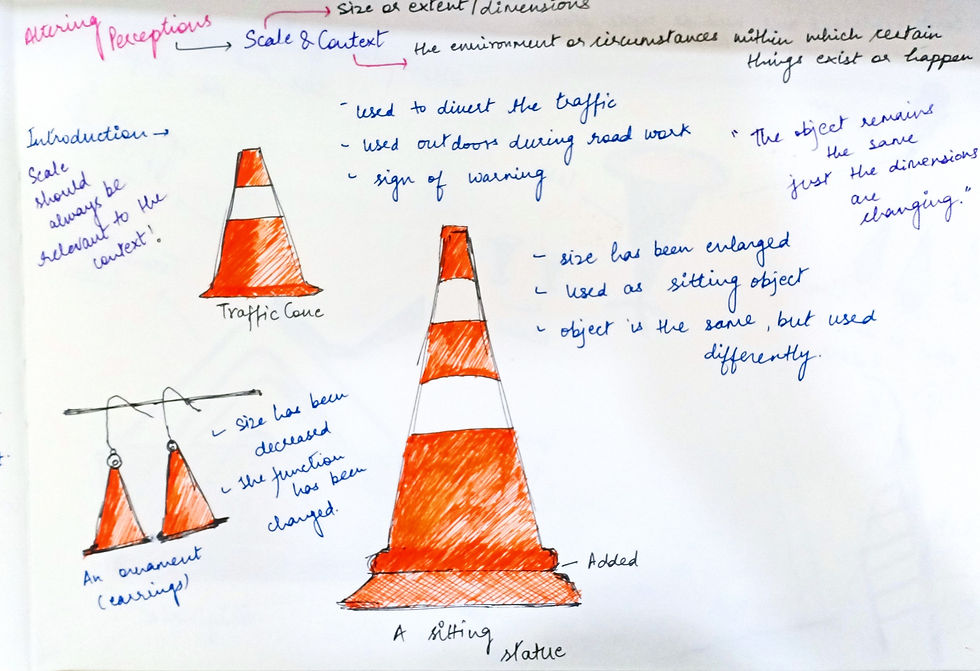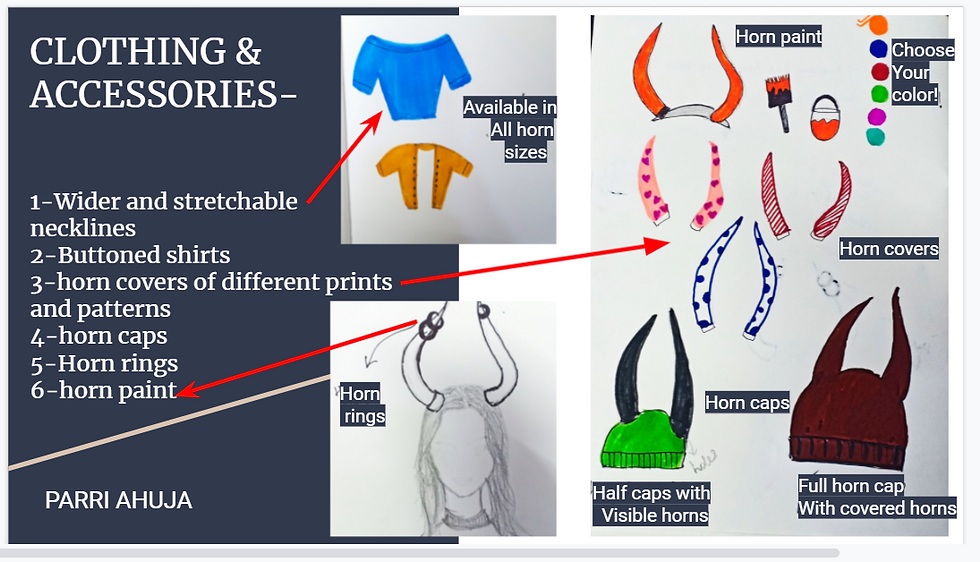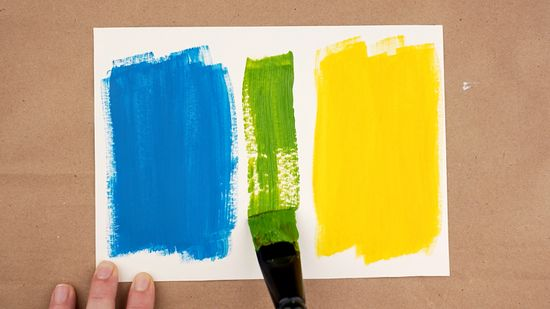Illustrated Glossary Of Design-
- Parri Ahuja
- Sep 25, 2021
- 1 min read
Updated: Mar 23, 2022
THINK LAB-
1.PERCEPTION | Perception for me refers to the way an individual perceives or understands things.
|  |
2.SCALE | Scale refers to the size, extent or the dimension of the object. |  |
3.CONTEXT | Context is the environment, setting or the circumstance within which certain things happen or exists.
|  |
4.PERSPECTIVE | The way an individual view or interpret things, basically different viewpoints of different people. |  |
5.STAKEHOLDER | A person or a group of people who is/are affected by some transaction (either monetary or non-monetary) happening around them either directly or indirectly. |  |
6. DIRECT STAKEHOLDER | The person who is directly related to A particular situation and is being directly affected. |  |
7.INDIRECT STAKEHOLDER | The person who is not directly related to that particular situation but is being affected indirectly with that transaction. | |
8.LINE | line is a point moving in space, and it's one of the seven elements of art. A line is not merely a line but can form a lot angles, shapes, symbols aa nd can express a lot of emotions. |  |
9.ASSUMPTION | Assuming or guessing something that we are not so sure of and lack a factual evidence or proof regarding it. |  |
10.NEW POSSIBILITIES | Something that does not currently exist but could have been possible in some other or a different kind of world. And I personally feel that anything and everything is possible. |  |
11.THINKING TOOLS | Are the tools or the ways that helps to think differently, convey, exchange and reconstruct ideas. |  |
12. SLICE AND DICE | Breaking down a task or a problem into smaller tasks/problems.
|  |
13.ATTRIBUTES | refers to characteristics or properties specific to an object.
|  |
14.SCAMPER | Scamper helps us to ask questions and teaches us, how to manipulate what exists into something different. |  |
15.CIRCLE OF OPPURTUNITIES | It helps us to make forced connections and generate ideas by forcing a connective link between common attributes and our challenge.
|  |
16.CROSS BREEDING | Mixing two things together to create a unique outcome.
|  |
17.IDEA BOX | Involves morphological analysis and helps to identify and box the parameters of a challenge to quickly produce thousands of new ideas. |  |
18.PERSONA | to define a particular character is often referred to persona. |  |
19.INFER | To make out a meaning from an evidence. | |
20.INFERING | Drawing conclusion from evidence and reasoning.
|  |
21.LATERAL THINKING | Involves thinking from different directions lateral thinking is a combination of both creative and critical thinking. In simpler words lateral thinking means seeking to solve problems by using unique methods .It's process and willingness to look at things in a different way. |   |
22. SIX THINKING HATS | The six thinking hats is a method used to amplify creative conversations, by making sure that a broad variety of viewpoints and thinking styles are represented.
|  |
ESSENCE OF COLOR-EOC1
1.INQUIRY | questioning why certain things happen and collecting information through research. |  |
2.REFLECTION | going through the whole process of what you have done, learning, through your mistakes and finding ways to correct them in future. |  |
3.HUE | A tone, tint, shade or variety of a color |  |
4.MUDDIEST POINT | the most difficult or confusing task for you. | |
5.LOG | a written record of your whole process or your journey of a project. | |
6.CONNOTATION | a word to suggest a different association than its literal meaning. | |
7.BLUE PERIOD | a period between 1901-1904 where Pablo Picasso painted monochromatic paintings in shades of blue. |  |
8.TRANQUIL | something quite or peaceful. | |
9.CULTURAL ZEITGEIST | spirit or essence of a particular time, means what is going on culturally, religiously, or intellectually during a certain period. | |
10.PERCEPTION | the way an individual see things or look at things from their viewpoints, its different for different individuals. |  |
11.ANECDOTAL EVIDENCE | a fact or information that is given based on a personal observation. | |
FUNDAMENTALS OF VISUAL LEARNING-1-FVL1
1.VISUAL | Something that we can see or can imagine it visually in our mind. |  |
2.COMPOSITION | When a number of elements come together to form an identity, which can be abstract or organised. |  |
3.FORM | It is the 3 dimensionality of a shape or an object. |  |
4.TEXTURE | Texture is more about what we touch and feel than what we see, everything has its own texture, which can be touched and felt. Patterns and textures are two different elements. |  |
5.SHAPE | Anything that is enclosed is a shape. |  |
6.THEMATIC REPRESENTATION | A representation that is connected to a theme or a particular subject. |  |
7.DIMENSION | The size and proportion of something in reference to it's lenght, width and height. |  |
8.GRADATION- | The colour that goes from light to dark or vice versa
|  |
MUNDANE TO MAGNIFICENT-M2M
1,CRIMPING | Compressing paper into small folds or ridges. |  |
2.PERFORATE | Making holes in paper using burning technique or sharp objects. |  |
3.PULPING | A technique to crush/shred, wet and grind paper in order to create something out of that pulp. |  |
4.EMBOSSING | processes of creating raised designs in paper and other materials. |  |
5.FORM | is the 3 dimensionality of a shape or It an object. |  |
6.NON-ADHESIVE | making something without using any adhesive to stick or place it. |  |
7.ORTHOGRAPHIC PROJECTION | Depicting an object using parallel lines. |  |
8.ETCHING | The process of making a design on glass or metal. |  |
FUNDAMENTALS OF VISUAL LEARNING-2
1.CONTOUR | The outline of an object. |  |
2.VOLUME | The depth in a form. |  |
3.VARIATIONS OF LIGHT AND DIMENSION. | The variations in degree of lightness or darkness in an area due to the direction of light on it. |  |
4.FLAT APPLICATION OF COLOR | Without merging colors and without applying different tones, just plain color application on a flat area. |  |
5.FORM ANALYSIS | Observing your form in detail, while capturing its accurate shape, color, size and texture. |  |
FORM TO FORMATION-F2F
1.ADDITION | adding shapes together either from faces, corners, or edges. |  |
2.SUBTRACTION | Subtracting shapes from a shape, either from faces, corners or edges |  |
3.CREATIVE EXTRUSION | stretching or pulling a shape in space to create a 3 dimensional form using creative ways. |  |
4.CARVING | shaping something from a material by scraping away portions of that material. Eg POP |  |
5.FORM | It is the 3 dimensionality of a shape or an object. |  |
6.MULTIDIMENSIONAL | Having more than 2-3 dimensions. |  |
7.PLATONIC SOLIDS | A Platonic Solid is a 3D shape where:
|  |
8.ARCHIMEDIANS SOLIDS | An Archimedean solid is a 3d shape which has 2 or more regular polygons. |  |
ESSENCE OF CULTURE-EOC2
1.MATERIAL CULTURE | material component for me in a culture refers to the things we can see, touch, hear, feel physically or do/perform. |
2.NON-MATERIAL CULTURE | consist of the beliefs, emotions, feelings or the significance/importance a particular ritual holds. the why component or the reasoning is mostly the non-material aspect. |
3.COMMUNITY | It's a group of people who share common beliefs. |
4.CULTURE | Culture is a part of a community, it is the norms, beliefs, values and practices that people follow in a community. |
5.NORM | A set of rules or guidelines. |
6.BELIEF | A feeling that something is true |
7.RITUAL | Its a process which is always done the same way. |
8.ANALYSIS | The insights or conclusion that you have gained from something. |
9.CONTEXT | the background information or in reference to. |
10.INSIGHT | a deep understanding of something. |
11.SUBTEXT | the feelings a material conveys. |
ILLUSTRATED VECTOR MAP- Digital skills
1.ITERATIVE APPROACH | -For me iterative approach has been a process that helped me think and rethink my ideas, it gave me time to revisit and improve my work from time to time until I was satisfied with the outcome. |
2.RESOLUTION | number of pixels in a 1 by 1 inch box |
3.DPI | Dot per inch |
4.PPI | Pixel per inch |
5.VECTOR | made by lines and dots, not much realistic, no pixilation, resolution independent and no size drama. |
6.RASTOR | made by pixels, realistic, resolution dependent, pixelization. |
7.CMYK | cyan, mjenta, yellow, krypton |
8.RGB | red, green, blue |
9.LAB | Lightness. A-channel, B-channel- used for merchandising and represents how a human can see a color. |
END TERM PROJECT-
1.ANALYSIS | The in-depth observation and examination of something. |
2. IDEA GENERATION- | creating outcomes of an idea(thought or suggestion as to a possible course of action). |
3.IDEA DEVELPEMENT | Developing those outcomes further for more better ideas. |
4.ITERATIVE APPROACH- | -For me iterative approach has been a process that helped me think and rethink my ideas, it gave me time to revisit and improve my work from time to time until I was satisfied with the outcome. |
5.ITERATION- | Iteration is the repetition of a process in order to generate a sequence of outcomes. |
6. GESTALT THEORY- | It lays out a set of laws which address how our brains take the visual information and organise it into something that makes sense to us,something familiar and orderly that we understand. |
ISOMETRIC TYPE-
1-ISOMETRIC- | means having equal measures |  |
2-ISOMETRIC SYSTEM OF DRAWING- | A method of visually representing three dimensional forms on a two dimensional surface. |  |
JOURNEY OF AN OBJECT-
1-VISCERAL | The impulsive/reflex action to something. |  |
2-ERGONOMICS | concerned with designing products, systems and services that fit people who use them, keeping in mind usability and utility. |  |
3-UTILITY | is the basic function or purpose that an object offers. |  |
4-USABILITY | refers to the experience of the user, in terms of the comfort, safety, satisfaction, storage etc of the product. |  |
5-EVOLUTION OF AN OBJECT | understood how requirements and needs for object emerge, and the various elements that have influenced its design over a period of time. Got to know why certain things were changed or replaced, what influenced it etc. |  |
CREATIVE EXPRESSIONS-
1-TEXT | What we can see directly. The text conveys the context and subtext |  |
2-SUBTEXT | The hidden meaning behind it. | |
3-CONTEXT | How is the meaning/message conveyed. The situation/background |  |
4-RENAISSANCE | It means rebirth as it symbolised the beginning of a new era of art, rebirthing the classical models of Ancient Greek and Rome periods while using the modern techniques. | |
5-HUMANISM | a Renaissance cultural movement which turned away from medieval scholasticism and revived interest in ancient Greek and Roman thought. It means human beings have the right and responsibility to give meaning and shape to their own lives. |  |
7-SCHOLATICISM | was to bring reason to the support of faith | |
8-SECULARISM | themes consist of day to day life and emotions. |  |
INTANGIBLE TO TANGIBLE-
1-ITERATION | enhancing the objective, meaning, purpose, or communication of an object to modify it to its best for its better usability. | |
2-KURF | Powder like substance that comes out of PVC pipe when we cut it. |  |
3-TANGIBLE | can be seen and touched, have a physical appearance. | |
4-INTANGIBLE | cannot be touched or grasped, not having any physical appearance. | |
5-INTUITIVE DESIGN | Intuitive design means that the use of the design should be easy to understand, regardless of the users' experience, knowledge and language skills. | |
6-JUXTAPOSITION | combining contrasting/opposites into one. eg good finish with rough finish, heavy material vs light material etc. |  |
7-CONCEPTION | the process of forming an idea or a plan. | |
8-INTUITION | The first instinct or the gut feeling. | |
9-EXPLORE | action of exploring an unfamiliar area. |  |
10-INVESTIGATE | a systematic or formal inquiry to discover and examine the facts. | |
11-ITERATIVE PROCESS | a series of steps that we repeat in order to tweak and improve our idea with each cycle. | |
12-IDEATIONS | generating a broad set of ideas on a given topic. |  |
13-DIVERGENT THINKING | exploring possibilities | |
14-CONVERGENT THINKING | deciding what to do | |





Comments